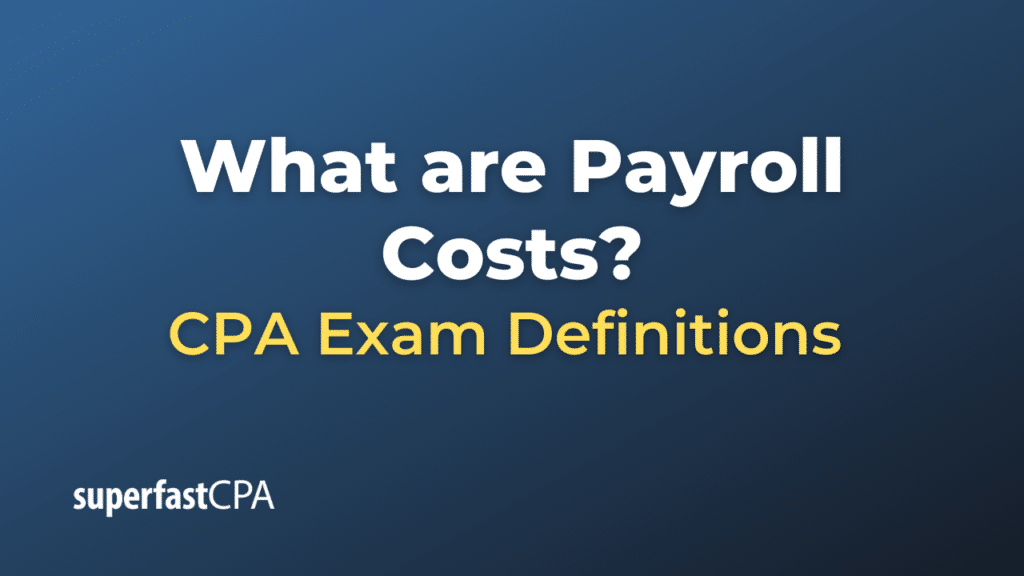Payroll Costs
Payroll costs typically refer to all expenses a company incurs as a result of employing workers. This not only includes direct payments like wages and salaries, but also other associated costs such as employer-paid taxes and benefits.
Here are some examples of common payroll costs:
- Wages and Salaries: This is the basic pay that employees receive for the work they perform. It may be calculated as an hourly wage or as a fixed salary.
- Overtime Pay : If employees work beyond their scheduled hours and are eligible for overtime, they should be paid at the overtime rate, which is typically one and a half times the regular rate of pay.
- Bonuses and Commissions: These are additional forms of compensation that are tied to employee performance or productivity.
- Employer-Paid Taxes: Employers are responsible for paying certain taxes on behalf of their employees. This typically includes contributions to Social Security and Medicare (in the US), as well as state and federal unemployment taxes.
- Benefits: This category includes costs related to health insurance, retirement contributions (like a 401(k) match), life insurance, disability insurance, and other benefits offered by the employer.
- Paid Leave: This includes the cost of vacation days, sick leave, maternity leave, and other types of paid time off.
- Workers’ Compensation Insurance: This is insurance that covers employees who get injured on the job. The cost of this insurance is typically based on the company’s industry and the types of jobs its employees perform.
The total payroll cost is a significant expense for most businesses and plays a crucial role in financial planning and budgeting. Understanding the full cost of payroll can help businesses manage their resources effectively and make informed decisions about hiring, compensation, and benefits.
Example of Payroll Costs
Let’s take an example of a small business, let’s call it “Best Widgets”, which employs five people.
Here are the payroll costs for Best Widgets:
- Wages and Salaries: Each of the five employees is paid an annual salary of $50,000, totaling $250,000.
- Overtime Pay: Occasionally, employees have to work extra hours. Over the year, Best Widgets pays out $5,000 in overtime.
- Bonuses: At the end of the year, Best Widgets gives out bonuses totaling $10,000.
- Employer-Paid Taxes: The company pays Social Security and Medicare taxes, which are 7.65% of wages in the U.S. This comes to $19,125 ($250,000 * 7.65%). The company also pays federal and state unemployment taxes, which come to about $2,000.
- Benefits: Best Widgets offers health insurance to its employees. The employer’s portion of the premiums comes to $25,000 for the year. The company also matches employee contributions to a 401(k) retirement plan up to 3% of their salary. Assuming all employees take full advantage of this match, that’s an additional $7,500 ($250,000 * 3%).
- Paid Leave: Best Widgets offers two weeks of paid vacation to each employee. If we treat this as a percentage of each employee’s salary, it comes to about $19,230 ($250,000 / 52 weeks * 2 weeks).
- Workers’ Compensation Insurance: The cost of workers’ compensation insurance for Best Widgets is $3,000 for the year.
Adding all these together, the total annual payroll cost for Best Widgets is $341,855. So while the base salaries total $250,000, the actual cost of employing these workers is significantly higher due to taxes, benefits, and other payroll costs.
This example illustrates the importance for businesses to understand the full cost of employment, not just base wages or salaries.














